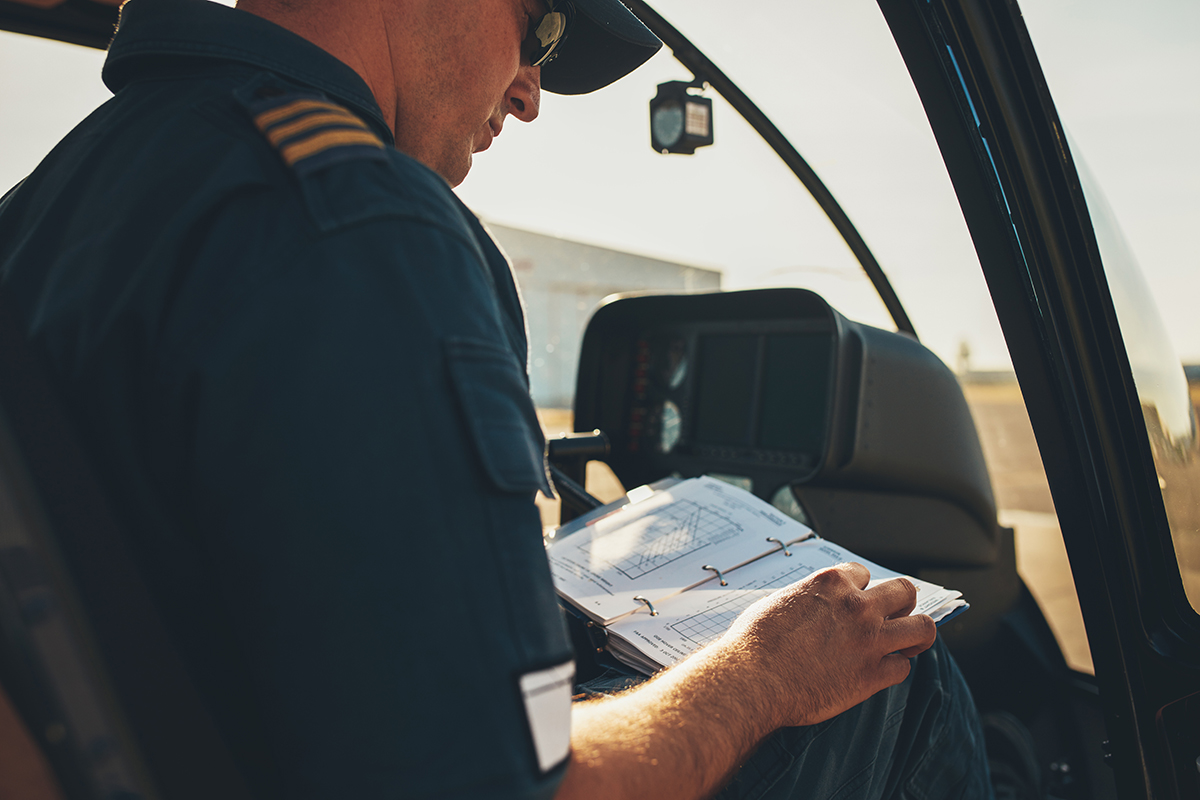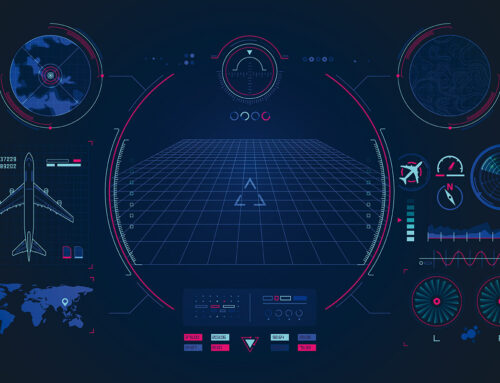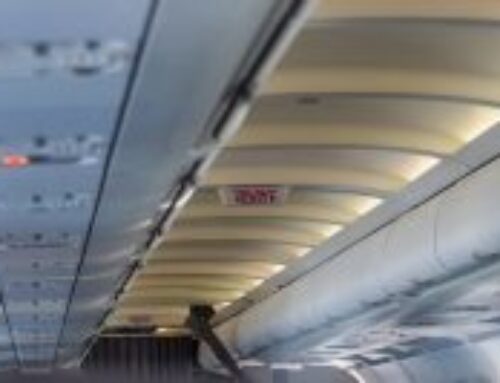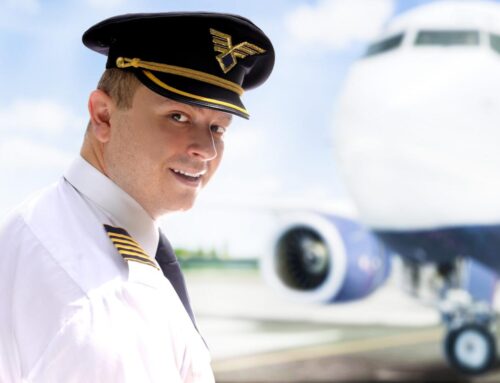Pilot licenses: which are they and how to obtain them

From the dream of flying and actually becoming an aircraft pilot, there are two basic steps: studying and obtaining a pilot’s license. The license, which is often also called a “flight license”, is a document that certifies the ability of its holder to fly an aircraft, according to the procedures and limits of the certifications contained in the license itself.
In the Italian legislation there are various categories of aircraft, for each of which there is a pilot’s license and several ratings or certificates:
– aeroplanes;
– helicopters;
– gliders;
– balloons, and
– dirigibles.
There is also a second important distinction between recreational and non-profit flying and professional and commercial flying, which foresees for the holder to fly for a fee.
During the path that leads to becoming aircraft pilots, the student is trained to obtain specific qualifications (ratings), i.e. aeronautical ratings that, once noted on the license, certify that the pilot is able to carry out specific activities, such as:
– to fly a specific model of aeroplane;
– to fly during the night (night rating);
– to carry out flights with only the help of instruments in case of lack of external visibility (I.R. – Instrumental Rating), and
– to be authorized to fly aircraft registered in Europe (EASA – European Aviation Safety Agency license) or registered in the United States of America (FAA – Federal Aviation Administration license).
The ratings obtained are, therefore, registered on the license and are issued at the end of a theoretical-practical training course carried out at Approved Training Organizations (ATO) by the National Aviation Authorities.
Basic requirements to become a pilot
Psycho-physical fitness is the first essential requirement to obtain a pilot’s license: it must be certified by the Aeromedical Centre of Air Force Forensic Institute or by a Maritime Health surgery of the Ministry of Health.
There are two different classes of psycho-physical fitness assessments in consideration of the license you wish to obtain:
– II class for private pilots, and
– I class for commercial and airline pilots.
To become an aircraft pilot you need to follow a course that includes a theoretical part and a practical part in flight and/or on a flight simulator: you can follow the course at a certified flight school or that has been approved by ENAC (Italian Civil Aviation Authority). After the course, it is necessary to take a theoretical-practical exam.
As for the academic requirements, you can take the course to become a professional pilot after you got the high school diploma or with Eight grade License (USA), Year 9 (UK, AUS, NZ), and after passing a maths, physics and English test, to verify the basic knowledge of the student.
What licenses you can earn from Professional Aviation
From Professional Aviation you can earn the main piloting licenses, as follows:
– recreational-sports pilot license (VDS: Volo da Diporto o Sportivo – it is the Italian Ultralight or Microlight certificate ULM – Ultra Light Machine certificate);
– private pilot license (PPL);
– commercial pilot license (CPL), and
– airline transport pilot license (ATPL).
Recreational-sports Pilot License (VDS: Volo da Diporto o Sportivo – it is the Italian Ultralight or Microlight certificate ULM – Ultra Light Machine certificate)
The recreational-sports pilot license is the title that allows you to fly ultralight aircraft, namely aircraft weighing no more than 450 kg (550 kg for amphibious aircraft and seaplanes). The minimum age required to obtain the VDS certificate is 16 years old.
At Professional Aviation you can choose the most suitable aircraft for you among the ultralights of our fleet. With us you can earn:
– Basic VDS, which allows you to take the VDS pilot license and fly alone aircraft of the VDS category; the course includes 33 hours of theory and 16 hours of flight with the instructor;
– Passenger qualification, which allows you to take a passenger with you on a trip; the course includes 3 hours of flight focused on emergencies;
– Advanced VDS, which is the qualification that allows you to cross controlled air traffic areas and also to land in airports of general aviation.
Private Pilot License (PPL)
The private pilot license is the flight license that allows you to fly a plane for private purposes, that is, not for profit. The age requirement for enrolling in the pilot course is for you to be at least 16 years old, while you must be at least 17 years old to take the exam. At Professional Aviation the courses for training and certification to fly are the following:
– PPL EASA course, which includes 100 hours of theory and 45 hours of flight carried out on either P2008 or Cirrus SR20 aircraft. The PPL EASA license allows you to fly aircraft registered in Europe;
– PPL FAA course, with enables you to fly aircraft registered in the United States. With us you can attend the course and take the exam, or, if you already have the PPL EASA license, we take care of the official conversion into the equivalent FAA title;
– CBM/IR EASA (Competence Based Modular Instrument Rating) course, i.e. the competence based modular/instrument rating qualification course, which allows you to fly at night or in weather conditions of poor visibility;
– Night Rating course, to obtain the qualification for night flight;
– CIRRUS TRANSITION TRAINING which allows those who already have a flight license to qualify to fly a Cirrus SR20/22/22T aircraft.
Commercial Pilot License (CPL)
The flight license as a commercial pilot allows you to fly an aircraft for profitable purposes, as a pilot in commercial air transport flights on a certified single-pilot aeroplane or as a first officer (co-pilot).
The age requirement is to be at least 17 years old, while to take the exam you must be at least 18 years old. On the other hand, the practical requirements are to have a private pilot license (PPL) and to have completed at least 150 total hours of flight training.
Airline Transport Pilot License (ATPL)
The airline transport pilot license represents the last step to become an airline pilot: it allows the candidate to become a pilot in commercial air transport flights on any certified single-pilot aircraft or as a first officer in commercial air transport on multi-crew aircraft.
The ATPL License from Professional Aviation is obtained by attending a modular course, which aims to provide the student with a complete knowledge of the theory, the piloting skills and the necessary qualifications to carry out the profession of airline pilot.
The modules provided for the ATPL course are the following:
– PPL, or Private Pilot License;
– ATPL THEORY (Airline Transport Pilot License), i.e. the theoretical course;
– HOURS BUILDING, which is a program of “store hours”;
– NIGHT QUALIFICATION, which is the qualification for night flight;
– IR or the Instrument Rating;
– COMPLEX RATING, i.e. the retractable landing gear and variable pitch propeller rating;
– MEP and IR-ME (“Multi-Engine Piston” rating and transition from the IR to Multi-Engine), which, respectively, enable to the “Multi-Engine Piston” and the Instrument Rating on multi-engine aircraft, and
– CPL, or Commercial Pilot License.
The course is structured according to the “scenario-based” teaching method, which unlike the traditional method of “manoeuver-based” training, has been designed to enable novice pilots to learn the flying technique and how to handle all the external factors inevitably connected to flying.
If you are determined tomgo in for a profession of airline pilot, Professional Aviation will be the right way to reach your goal: we will provide you with all the useful information to learn about the study path that awaits you and all the possibilities that this profession can offer you for your future.
All categories
Popular Posts
Recent Posts






